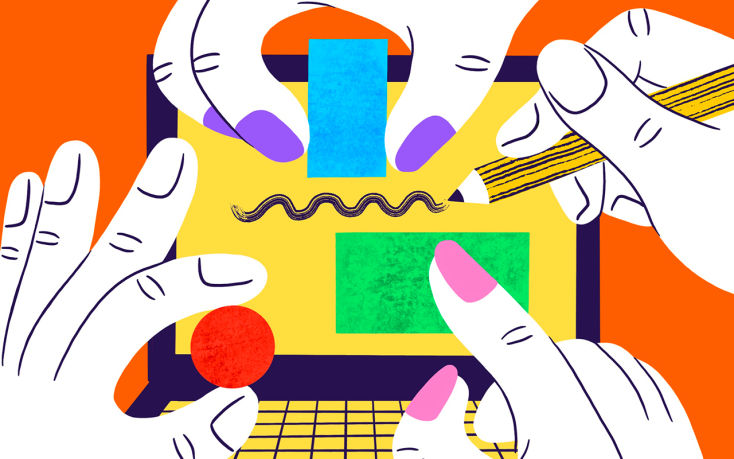New normal: How UXR is shaping the post-COVID-19 future of telehealth

Before the pandemic how many of you had considered calling your doctor up for a phone consultation when you were sick? If the numbers are anything to go by, not very many. Unsurprisingly, the health care sector was one of the most impacted areas of the COVID-19 global health crisis. Most notably, the use of telehealth—the exchange of medical information from one site to another through electronic communication to improve a patient’s health—exploded.
Before the pandemic hit, people largely avoided telehealth services. Amwell’s 2019 Consumer Survey revealed that only eight percent of US consumers had engaged with telehealth before COVID-19. As a result of the pandemic, Forrester analysts projected more than one billion virtual healthcare interactions occurred by the end of 2020.
In times of rapid global transformation, there is greater uncertainty and risk around product development. In turn, there should be a greater emphasis on research to understand new user needs and to de-risk future product development.
Research is vital to the next generation of digital health care solutions
To help us understand how customer research is shaping the future of the telehealth industry, James Vinh, President of SDXD, spoke with us about his experiences in the field.
“For a lot of the consumer-facing tech apps and hardware that we work with, digital natives are the typical demographic,” he begins. “But in the research that I’ve done in telehealth, it’s usually an older aging population who might not be familiar with a touch interface or technology that has a lot of inputs and requirements.”
Customer empathy is an all-important cornerstone of UX research, but the concept takes on new meaning in the health care industry.
“Many patients I worked with were recovering from hip and knee surgery. So there’s that physical injury. And then also mentally and emotionally, there’s that loss of independence and that sense of looming uncertainty,” says Vinh.
“With something as simple as an empathy map, we can get insight into what patients are thinking and begin to understand their real concerns.”
Vinh walks us through the logistical challenges of translating in-person care into a remote digital experience. The affordances of having someone in the room to help a patient feel comfortable, walk through procedures, and assist with any troubleshooting—all need to translate to a patient-friendly, digital context. Communication and a sense of ease and support must be communicated virtually through text and digital formats. It takes seconds for another person in a physical context to solve something as simple as the location of a button on a keyboard. In a remote setting, in the absence of visuals, the task can be borderline impossible. Critically, it’s important to “make patients feel supported, welcome, and loved—even though there’s not that in-person connection,” says Vinh.
COVID-19 changed the way practitioners view technology
Patients aren’t the only end-users of telemedicine. Research efforts need also to consider health care practitioners’ needs in the development of new technology.
In his field, says Vinh, there was an almost uneasy tension between human and machine before the pandemic. The notion that digital solutions will replace practitioner care as opposed to facilitate it was common. Since the novel coronavirus forced the world into remote interactions, however, there’s a growing appreciation that humans and machines can work together.
As more practitioners adopt remote technology to care for their patients, another dimension of UX research becomes realized. “It’s not just the patients, but it’s also, of course, the physicians, the physician’s assistants, and the practitioners, who are experiencing this learning curve,” he says. “Both the patients and practitioners are learning together, getting used to the new norms.”
Future of telehealth
According to a recent McKinsey report, health care providers in the United States have seen a 50 to 175 times growth in the number of patients using telehealth services compared with pre-COVID-19 days. Where before the total annual revenues of US telehealth players were an estimated US$3 billion, projections are now showing that up to US$250 billion of the current US health care spend could be virtualized.
With unprecedented growth levels for the industry on the horizon, Vinh believes researchers will have to help product developers overcome many complex challenges. “I think the onboarding both from the patient and the provider side is going to continue being a challenge,” he says. “Because as far as I’ve seen, there are best practices, but there’s no uniform approach. We need mature design systems, and standards and practices for telehealth solutions and how we conduct research on them. There’s going to be a learning curve as people present prototypes and eventually build those out into systems.”
Vinh cites the COVID-19 pandemic as presenting another type of unique challenge for researchers and product teams. Last year, as most of the world was forced indoors, each day brought new degrees of uncertainty. Recommendations and best practices often changed daily. Designing systems that can cope with a pace of change on the level we’ve seen in the past year will be incredibly difficult for product teams to achieve.
Vinh remains hopeful that the future of telehealth is bright. Ultimately, people will use these services to help get healthier more quickly and efficiently. “We’d love to see a decrease in costs because it’s not going to be so manual and labor-intensive,” he says.
“And then I’m hoping for an overall more pleasant patient-provider experience with improvements to a lot of the common things that we associate with healthcare, whether it’s long wait times or inadequate healthcare outcomes,” says Vinh. “People often say they’re not getting enough attention or personalized care. Hopefully, practitioners in conjunction with these tools can help fill that gap and make sure everyone’s getting healthier and feeling like they’re taken care of.”
Written by James Vinh, President, San Diego Experience Design Professionals. James is President of San Diego Experience Design Professionals, where he leads over 2,800 UX Professionals in cultivating a vibrant local design community centered around inspiration, connection, and education. He received a B.S. in Human-Computer Interaction from UC Irvine and specializes in qualitative user research, with previous professional experience in Biotech at Thermo Fisher Scientific and Medical Devices at Reflexion Health. James believes that leveraging user research to understand and empathize with users leads to memorable, impactful experiences. James is vehement about advocating the value of user research and engaging cross-functional team members throughout the research process.

Users report unexpectedly high data usage, especially during streaming sessions.
09:46AM24 Sep, 2024
Users find it hard to navigate from the home page to relevant playlists in the app.
11:32AM9 Mar, 2024
It would be great to have a sleep timer feature, especially for bedtime listening.
15:03PM13 May, 2024
I need better filters to find the songs or artists I’m looking for.
4:46PM15 Feb, 2024Log in or sign up
Get started for free
or
By clicking “Continue with Google / Email” you agree to our User Terms of Service and Privacy Policy


